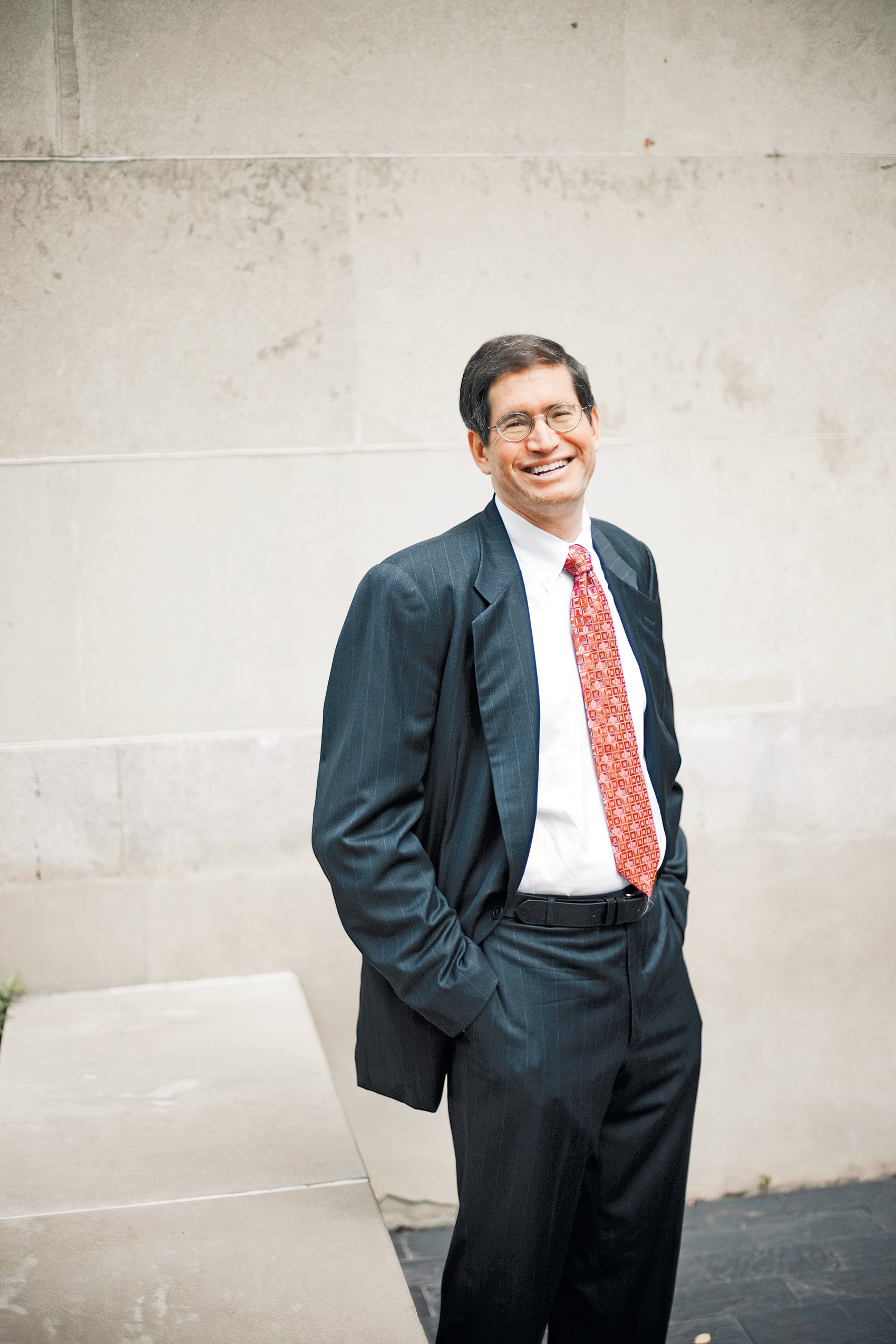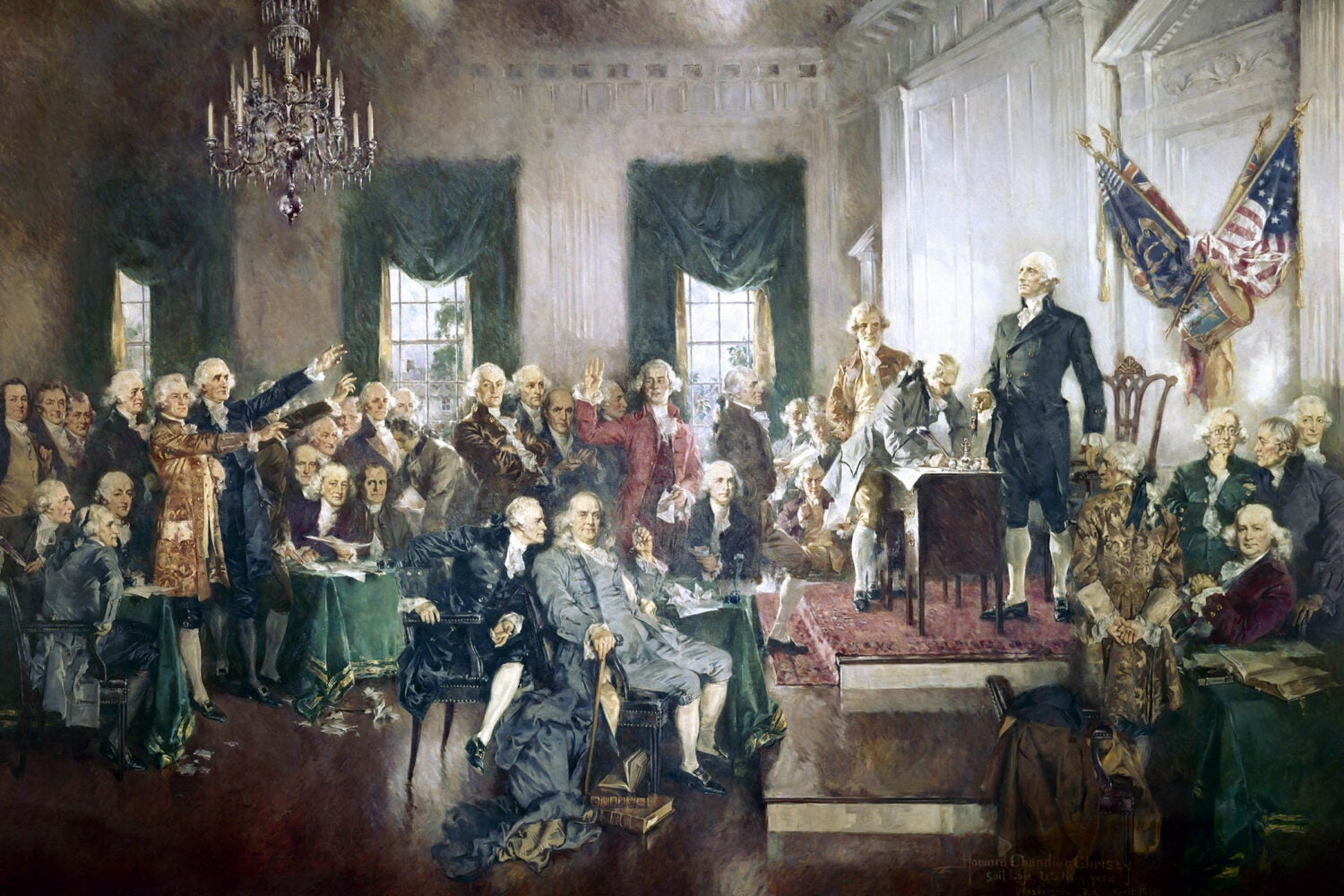It’s no accident that voters can’t directly elect the president of the United States. In fact, it is part of a larger goal of the Constitution’s framers to limit populist power, says Michael Klarman, the Charles Warren Professor of American Legal History at Harvard Law School.
“We should not blindly revere the Constitution,” he warns, citing this and other anti-democratic provisions.
Massachusetts delegate Elbridge Gerry expressed the sentiment succinctly at the Constitutional Convention of 1787: “The evils we experience flow from the excess of democracy.” (It is ironic, perhaps, that Gerry later lent his name to another practice often viewed as anti-democratic: gerrymandering.)
The Philadelphia Convention had been called to amend the Articles of Confederation, the original framework of government for the United States of America, Klarman says. But it soon became clear that many of the assembly’s delegates — including George Washington, the Virginia aristocrat, Revolutionary War general, and later president, who presided over the proceedings — believed the nation’s first charter was deficient in several major ways. The process of emendation soon gave way to outright replacement.
One aspect of the status quo that the framers found troubling was the relative political influence of the voting public, particularly through their control over state governments, argues Klarman, author of the 2016 book, “The Framers’ Coup: The Making of the United States Constitution.”
“Most people are aware that the Constitution that eventually emerged provided for a far stronger national government,” he says, adding that it provides the national government with powers not granted to Congress by the Articles, including the ability to levy taxes, create and oversee a national military, and regulate interstate and foreign commerce.

But what is less well-known, Klarman continues, is that many of the framers also had anti-populist aims in mind while drafting the Constitution. “They wanted to insulate the federal government from political accountability relative to the Articles of Confederation or contemporaneous state governments.”
To understand why, Klarman points to the aftermath of the American Revolution, which left in its wake destroyed property, weakened economic demand, depreciating money, and exclusion from trade with the British empire — resulting in a severe economic recession.
At the same time, states had levied heavy taxes on residents to repay war debts. Yeoman farmers, who comprised 90 percent of the country’s population at that time, struggled to pay these taxes, leading to land foreclosures and even violent insurrections, such as Shays’ Rebellion in Massachusetts, Klarman says.
Eventually, state politicians, responding to their constituents’ demands, began passing various debt relief measures, which, while popular with debtor farmers, did not sit well with the nation’s propertied or creditor classes, including Washington and many of his fellow framers.
“Ordinary and elite Americans had very different perspectives on such laws,” he says. “Debtor farmers believed them to be sensible and needed because of the severe economic contraction. But the elites thought such measures were contrary to natural right and terrible policy. They believed that the government was created to protect property, not redistribute it.”
“We should try to improve the Constitution so that it better serves the needs of today, rather than blindly revering it.”
Washington and his compatriots believed they knew why state governments had gravitated towards creating this “political problem,” says Klarman. “Essentially, they thought that state governments were too responsive to public opinion through direct elections, annual elections, small legislative districts, and weak executives without veto power.”
Those in favor of solving this “problem” often won out at the Constitutional Convention, says Klarman. The final document included provisions prohibiting states from issuing currency or providing debt relief and giving Congress the power to quell tax rebellions, he adds.
But the Constitution’s drafters didn’t stop there. Another way the framers addressed populism was to ensure that the president was selected not by individual voters but rather by a body of electors selected by the states, Klarman says. The chief executive would also have veto power over legislation.
The framers tried to insulate Congress from populist pressures, too. Before the 17th Amendment was ratified in 1913, senators were selected by state legislators — not directly elected by voters. Members of the Senate were also given longer terms of office — six years — in the hope that this would further insulate them from undue populist influence. Even the House of Representatives, whose members are directly elected, was kept relatively small to limit its populist inclinations, he adds.
And the apportionment of members of Congress among the states has also resulted in an antidemocratic bent, says Klarman. Originally a compromise between large and small states, the proportional representation of the House paired with the fixed two senators for each state, makes the United States Senate “the most malapportioned legislative body in the world. For example, the population of California is roughly seventy times that of Wyoming, but the two states have the same number of votes in the Senate,” he notes.
The framers also considered how to shield the judiciary from populist influence. “While the Articles of Confederation provided for no federal courts, the Constitution authorized a nationwide system of courts (while itself creating a U.S. Supreme Court) to protect the interests of the federal government, particularly with regard to taxation and the enforcement of federal treaties,” Klarman says. To safeguard their political independence, federal judges were vested with tenure “during good behavior” and protection from salary diminution.
It all adds up, he believes, to a Constitution that, while promising liberty to the citizens of the nascent United States, also limited their political influence on the national government — to say nothing of those left out of the franchise entirely, including women, enslaved people, and those who did not own sufficient property under then-existing state laws.
While the framers were, for the most part, brilliant and virtuous men, Klarman says, “it seems difficult to believe that the solutions they provided for a predominantly rural nation of about four million, who played essentially no role in international affairs, would remain a sensible governing document for the modern United States of America.”
“We should try to improve the Constitution so that it better serves the needs of today, rather than blindly revering it,” he concludes.
Want to stay up to date with Harvard Law Today? Sign up for our weekly newsletter.
